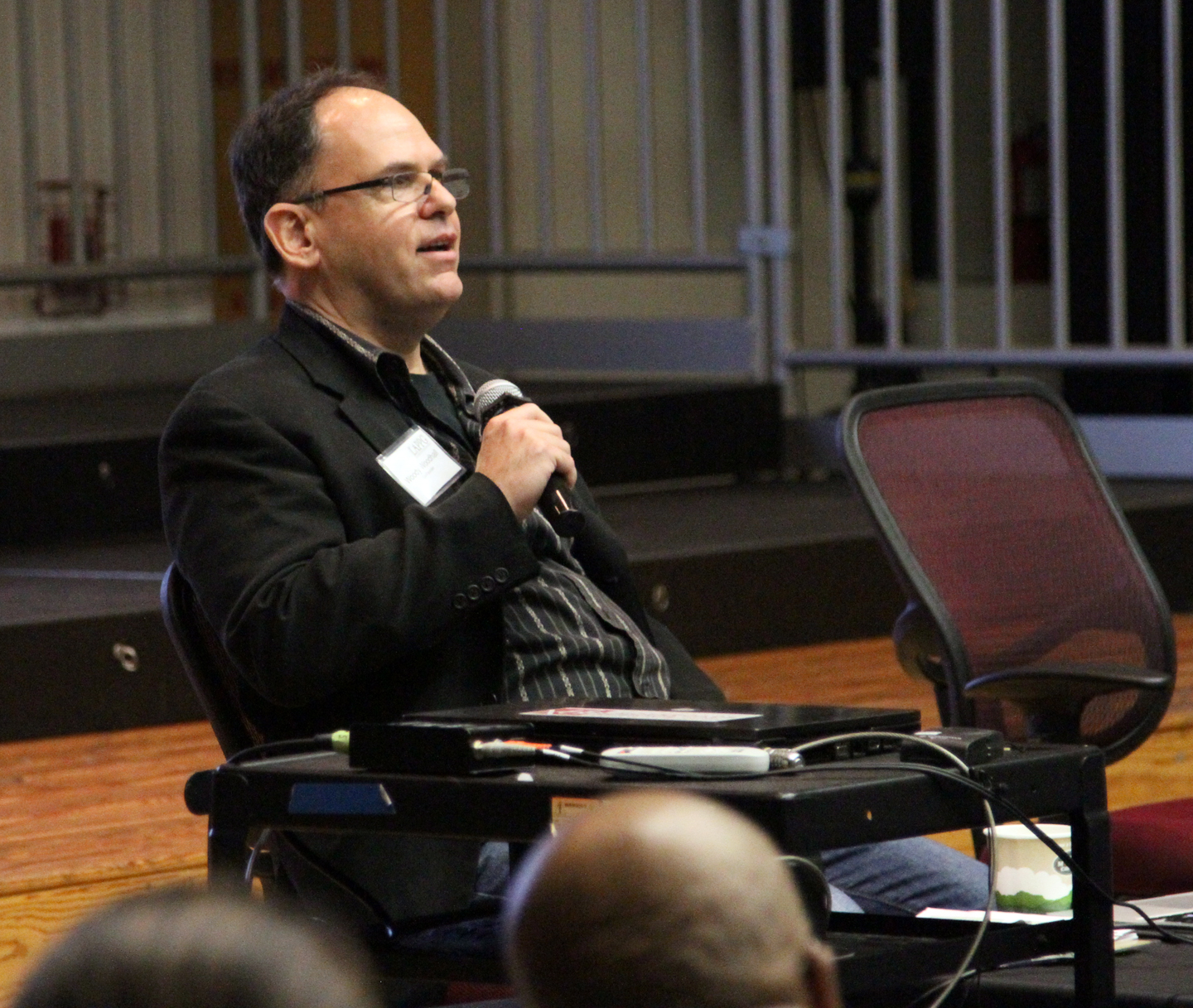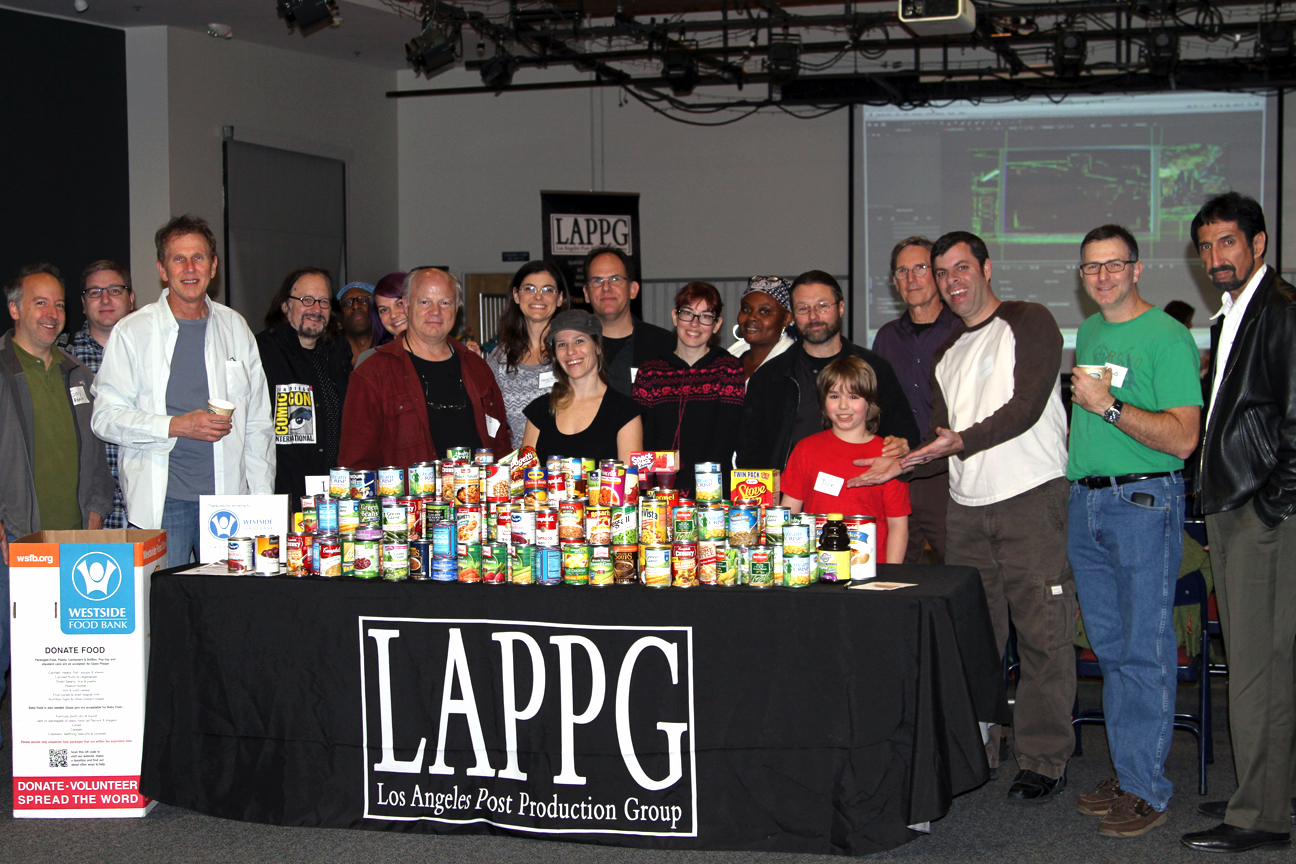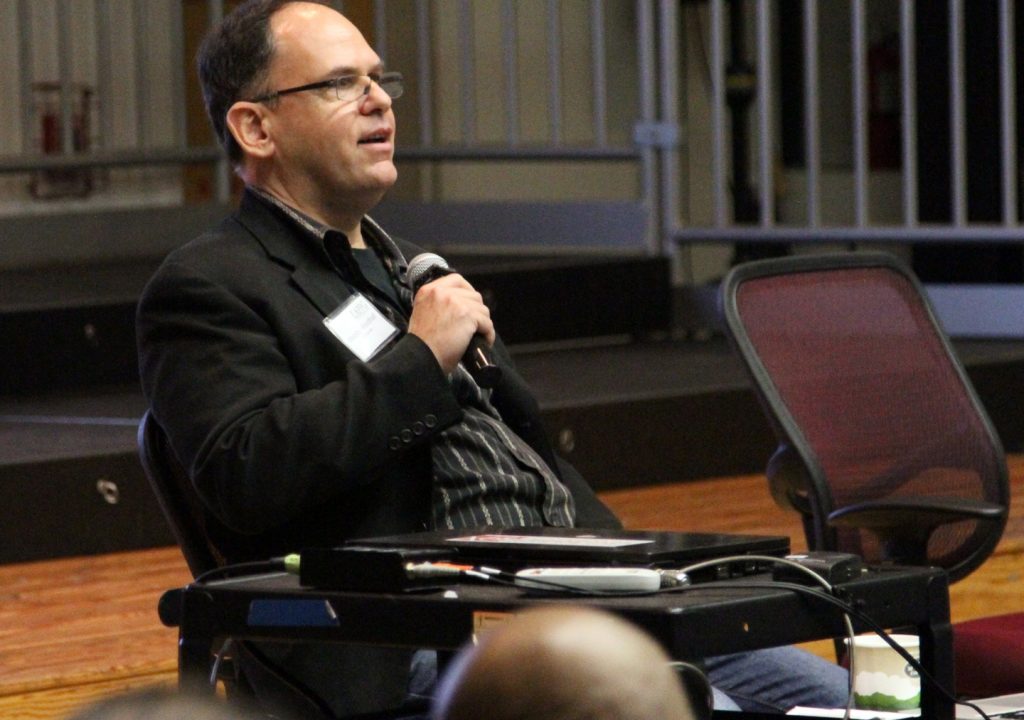The Los Angeles Post Production Group (LAPPG) is an organization for digital filmmakers with an interest in post-production and film finishing. Founded by our own Woody Woodhall, the group is composed of many of Hollywood’s working industry professionals and is a supportive community inspiring its members to excel in the finishing process of all forms of digital content. LAPPG is also an open membership group.
 Guest speakers have ranged from Fitness In Post founder Zach Arnold to Variety chief film critic Justin Chang to the Boris FX team talking through the essentials of their software. At their next meeting scheduled for February 11th at 7:00pm, Woody is set to explore some key details around audio that every professional needs to know. It’s a presentation that has origins in his recent Audio Splits, Stems & Elemental Tracks article, and he’s prepared to talk through critical audio imperatives for your final project as well as other aspects of audio for distribution or broadcast.
Guest speakers have ranged from Fitness In Post founder Zach Arnold to Variety chief film critic Justin Chang to the Boris FX team talking through the essentials of their software. At their next meeting scheduled for February 11th at 7:00pm, Woody is set to explore some key details around audio that every professional needs to know. It’s a presentation that has origins in his recent Audio Splits, Stems & Elemental Tracks article, and he’s prepared to talk through critical audio imperatives for your final project as well as other aspects of audio for distribution or broadcast.
We caught up with Woody to ask him about some of his recent experiences as a working professional, what so many picture editors don’t understand about audio splits & stems and why coming together in the physical world is so important.
ProVideo Coalition: It’s always great to catch up with you and see which popular shows you’re part of in ways many people would have never guessed. What have you been working on lately?
My work is as a supervising sound editor, sound designer and re-recording mixer through my audio company Allied Post. I’m coming off of a strong year in unscripted television. I’ve just started the 9th season of a Food Network series called “Mystery Diners“, a hidden camera show that has quite a number of interesting audio challenges. I’ve done the entire run since the pilot so its been a great experience working with the producers and post staff. I’ve just ended the first season of a show for History called “Museum Men” a fascinating show about a very talented team of artists who recreate historical things for museums. The scope of their technical prowess and their artistry in woodworking, sculpture and fine painting is dazzling, plus it has lots of interesting facts related to whatever exhibit they are building. There are quite a few other series that I posted over the past year but also recently I did a two-hour movie for LMN Network called “My Uncle is the Green River Killer” that was both terrifying and heart wrenching. It told the story of the family members of this serial killer and how his crimes affected the family both at the time and now that he is serving a life sentence. It is a chilling tale told from the inside.
All of the shows that I work on, be it feature film, television commercial or television series have so many different audio issues to be dealt with as well as completely different sets of deliverables. Between my team and I sometimes keeping it all straight can be daunting. But I am lucky to have such a great crew and support staff and the talented clients who keep us all busy!
You’ve mentioned that some picture editors say they “don’t do sound”. What kind of issues can and does that outlook create for a production as a whole?
Woody Woodhall: Fortunately that’s a pretty rare occurrence these days. But when someone has said that to me, they’re telling me that they’ve cut the audio to match the scenes, but nothing else. Some picture editors cut to a script and add the prerequisite sounds, a car horn here or a door slam there. There are other picture editors who are equally creative with cutting picture and sound. That’s the crux of it there. Some editors embrace the sound and use it to help enhance the telling of the story.
Its no different than anything else – some DPs get great shots, others don’t, some actors are great, others maybe not so much. A great picture editor will have the skills to choose shots, to create a visual style, and to pace the story. But sound is attached to every part of all that footage and editing and manipulating the medium of sound for picture is an art and skill unto itself. I think that some editors may also be a bit facetious in that they know the material is coming to post audio sessions sooner or later so they know that the audio will be properly attended to so they put less time there. To others its not a choice – their sound is integral to their edit.
Your exclusive coverage at AES this year provided great insights into where audio hardware and software tools are headed. What was the most exciting part of that event for you?
There are always innovations or important upgrades to prior gear, be it hardware or software that are must sees at AES. This year there were many important upgrades and improvements to some already great gear. RX, from iZotope, is not a new product, but version 4 which they had just announced is the best one yet. And its already a powerhouse audio shaping and restoration bundle of tools. It now includes the dialog denoiser in the standard package. The advanced package also has some new innovative tools geared toward the professional post market. The one stand out is the ambience match creator. It can strip audio recordings just down to the room tone of the recording space. I use it on almost every show that I edit and mix. Its a game changer for room tone. Wow, does that sound like an audio geek! iZotope gave us at PVC a sneak peek at Ozone 6, a major upgrade to their audio mastering bundle too. Its a mighty upgrade to a very powerful audio suite.
You’ll be speaking at February’s LAPPG event about some key insights regarding audio splits, stems & elemental tracks, something that you shared via a recent article for PVC. What sorts of problems do you run into regarding audio deliveries?
As someone responsible for delivering a lot of audio content, the biggest problem typically lies in miscommunication. Its important to understand what the requirements are, as well as why the requirements are… What I mean is – when you understand how they plan to use the stems it can clarify what is wanted. There are not a lot of standards when it comes to deliverables for audio, except for the obvious ones – no distortion, blend consistent levels, etc. Every distributor or broadcaster has an infrastructure on how they re-purpose their programming. There is some crossover but generally each is a unique situation. The final, mastered audio mix, if split into various versions of dialog, music and effects, can give a lot of latitude to change things later, for different countries, territories or rights issues. The misunderstandings arise when the way things are phrased in a spec doc can seem contradictory or near impossible to achieve.
I always try to verify the delivery requirements beforehand as to what is expected. If I have questions I will then have time to get them answered and either verify or change my outputs to deliver the audio correctly. I also make it a practice to read the spec doc front to back, including everything about the picture delivererables. In there I typically find lots of requirements for individual stems that are not on the separate “audio deliverables” list. These could be mono versions of the stereo requirements, or perhaps uncensored stems or an unusual mixdown like – “full mix, no music”. At some point every one of those splits will be required for delivery so its best to plan all of it at the start.
Is the issue that professionals aren’t aware of key details? Or is it something else?
Many filmmakers don’t really understand the complexity of what is required of their program for sale, distribution or broadcast. Deliverables – in practice – can be harder than what’s indicated – on a doc. For audio there can be many gray areas when splitting mixes out. There are many instances where, for whatever reason, in that particular show, at that particular moment, there are questions and conflicts to creating what you are asked to deliver.
Sometimes, for example, dialog is split to effects stems. A scene with a couple of actors could be playing out in the background, those actor’s voices barely audible in the mix, while a main character being interviewed is speaking. That background dialog will go to an effects stem and the interviewed person’s audio will go to the dialog stem. Then there is a cut from that interviewee to a closeup of the “background dialog” person. They are no longer background but instead are full screen, in sync, featured dialog. Now, their audio will go to the main dialog track, not to the effects track since they are the on-camera, in sync dialog at that moment in the program. Then there is a cut back to the main character being interviewed and they have the “background dialog” actor is now speaking in a background scene (effects stem) again. If you’re still with me on this example, yes, it can get confusing and seemingly illogical.
 Media & entertainment professionals converse with each other on a daily basis via email, social media and sometimes the phone. Do you think it’s also important/necessary for them come together in the real world?
Media & entertainment professionals converse with each other on a daily basis via email, social media and sometimes the phone. Do you think it’s also important/necessary for them come together in the real world?
The real world is the important thing. Face to face networking is imperative to a freelancers future. The social media aspect, be it Facebook, Twitter whatever, I think, helps deepen and define relationships. They can provide clarity as well, if the person is prone to internet flaming or they post videos of things they made that you didn’t know they were involved in, it can give you new insights into this person. There is this weird, intimate connection to someone, their beliefs and career but still removed from their day to day lives.
My group, Los Angeles Post Production Group, is an amazing network of working professionals. Membership is open to all. So the mingling of seasoned working pros with students, interns and even those who are re-entering the post employment market after some time away is key. When you come regularly to meetings over time, we meet monthly, all of a sudden those unfamiliar faces become friends and colleagues. And eventually possible employers or job leads. Freelancers are always looking for their next job. And everyone working in the film industry is a freelancer…
What kind of feedback do you typically receive from LAPPG members after one of your events has wrapped?
LAPPG is a great community of people. We’re in our seventh year and we have many regularly attending members who’ve been with us since the first meeting. Since we offer such a wide array of sessions members tend to come to the ones that are most pertinant to what they are seeking to learn. In that sense the meetings are always a great success. In some cases the turnout is outstanding simply because the subject matter is of interest to a greater number of people. We had the edit team from Gone Girl come and talk about the process and infrastructure that they built and it was a huge meeting.
I tend to do a couple of audio specific presentations a year personally and those are always well regarded. Audio is one of those “black arts” to many people. When I discuss compression or EQ, noise reduction, or as in the case of this upcoming meeting audio deliverables, the turnouts are always really strong. Filmmakers are so busy with so many skills sets today that one or more will take a hit. Audio is usually a skill that is acquired later if they are not “sound people” since it is typically considered after the visuals have been worked on.
Members call or write a day or two after the meetings to let us know that they liked the night or suggest additional sessions that we might want to explore deeper at a later date. We are always thrilled when we find out that because of a connection at a meeting someone got work or someone found some crew that they needed. That’s exciting because it proves the power of networking and deepens the connections of the community that we’ve created. We have members all over the world who take advantage of our discounts, jobs board and our partner announcements. However the real power is attending the workshops and pressing the flesh.

Filmtools
Filmmakers go-to destination for pre-production, production & post production equipment!
Shop Now










